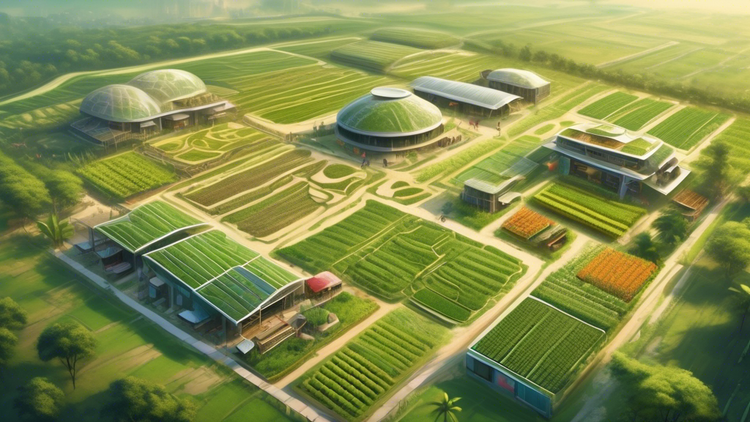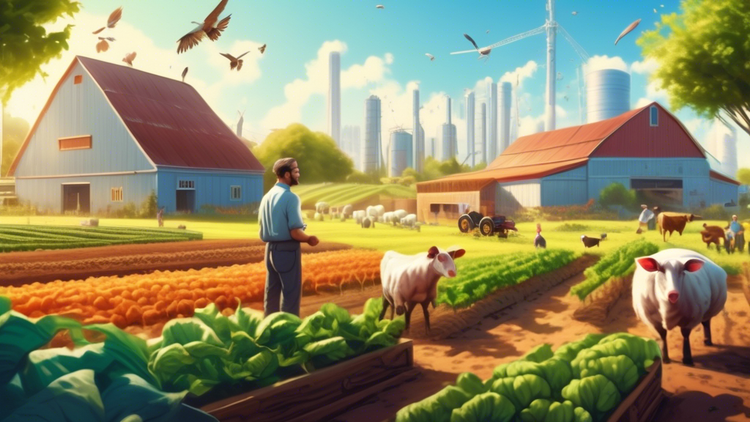Regenerative Agriculture: Soil Health to Sustainable Practices

Introduction to Regenerative Agriculture
Regenerative agriculture represents a paradigm shift in the sustainable stewardship of our natural resources. This approach goes beyond preserving the environment—it aims to actively rejuvenate and enhance the agricultural ecosystem. Episode 58 delves into how regenerative agricultural practices prioritize soil health, leading to more resilient food systems and improved environmental outcomes.
Core Principles of Regenerative Agriculture
At its heart, regenerative agriculture encompasses a series of principles designed to restore and enhance the health of ecosystems:
- Improving Soil Health: This includes increasing soil organic matter, which helps retain moisture and sequester carbon, reducing the impact of farming on climate change.
- Biodiversity Enhancement: Diverse mixtures of crops and livestock lead to more resilient ecosystems capable of withstanding pests, diseases, and variable climate conditions.
- Water Management: Efficient use and reuse of water resources ensure that the agricultural processes do not strain local water systems.
- Minimizing Chemical Inputs: Reducing or eliminating the use of synthetic fertilizers and pesticides to promote nature's own methods of growth and pest management.
- Integrating Livestock and Crops: Mimicking natural ecosystems through the integration of plant and animal agriculture to optimize nutrient cycles.
Benefits of Regenerative Agriculture
Practicing regenerative agriculture can lead to numerous benefits not just for the farm environment, but globally:
- Carbon Sequestration: Healthy soils can store large quantities of carbon pulled from the atmosphere, contributing to climate change mitigation.
- Improved Soil Fertility: Soil health is fundamental for prolonged agricultural productivity, with better soil structure and fertility leading to higher yields.
- Water Conservation: Enhanced water retention helps manage water use efficiently, protecting against drought and reducing irrigation needs.
- Resilience to Climate Variability: Diverse ecosystems are typically more resilient to climatic extremes, reducing the risk of crop failure.
- Economic Benefits: Lower input costs and potentially higher outputs can lead to improved profitability for farmers who adopt these practices.
Case Studies and Real-World Applications
Episode 58 highlights several case studies that illustrate the positive impact of regenerative agriculture:
Case Study 1: Midwest Corn Farm
In the American Midwest, a corn farmer has transitioned to no-till farming and diverse cover cropping, resulting in a 40% increase in soil organic matter and a 20% increase in yield.
<h3>Case Study 2: Australian Grazing Systems</h3>
<p>Australian ranchers practicing holistic planned grazing observed improved water retention and grassland rejuvenation, leading to a 25% increase in livestock carrying capacity.</p>
Challenges and Limitations
While regenerative agriculture practices hold great promise, they also face challenges:
- Economic Hurdles: Initial changes and transitions can be economically daunting for small to medium-sized farms.
- Knowledge Gap: There is a need for more extensive training and education to spread these practices effectively.
- Scaling Up: Adapting regenerative methods to various environmental and climatic conditions across the globe remains a challenge.
Here's a thought to consider
Regenerative agriculture not only paves the way for sustainable food production but also acts as a significant player in wider ecological restoration efforts. As evidenced by the tangible benefits and examples discussed in Episode 58, it's clear that when implemented thoughtfully, these practices can transform the very essence of farming from soil up, leading to a healthier planet for future generations.
Looking for updates? Sign up to our newsletter for weekly snippets.





